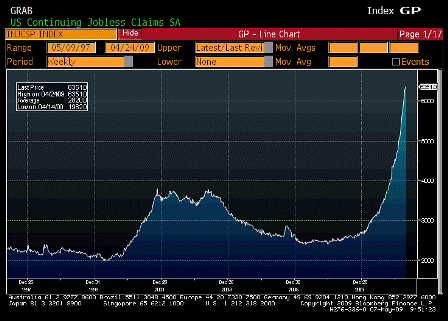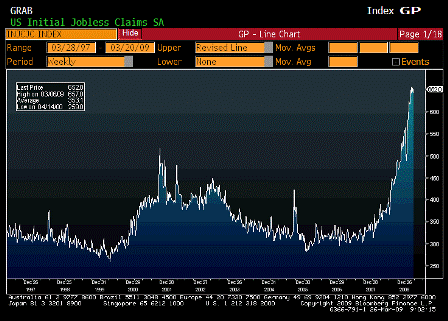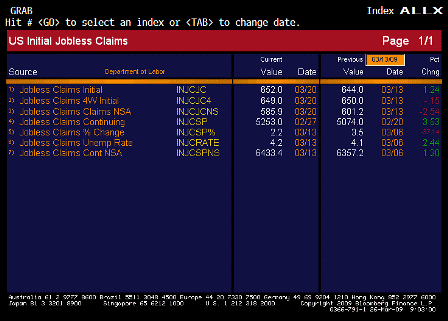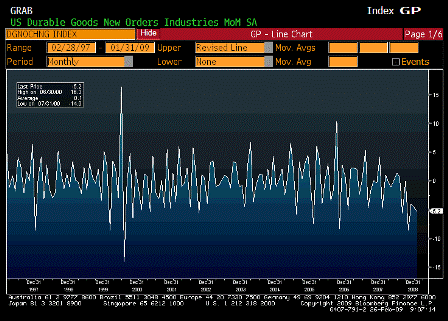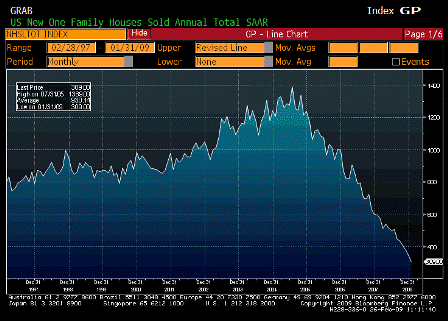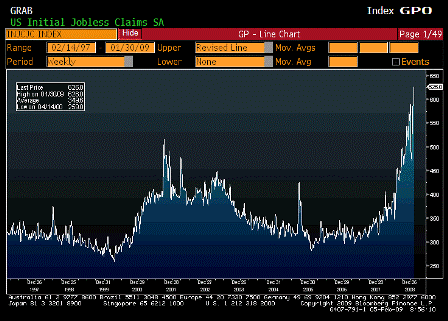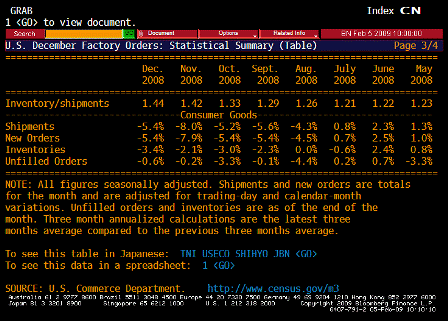As previously discussed, the real economy seems to be muddling through, and at firmer levels than the first half of the year.
The trade report will probably result in Q2 GDP being revised down to just below 1%, but up from the .4% reported for Q1
So Q3 still looks like it will be at least as strong as q2 and likely higher with lower gasoline prices and Japan coming back some.
With corporate profits still looking reasonably strong, corporations continue to demonstrate they can do reasonably well even with low GDP growth and high unemployment.
And with a federal deficit of around 9% of GDP continually adding income, sales, and savings I don’t see a lot of downside to GDP, sales, and profits, though a small negative print is certainly possible.
Jobless Claims Dip, Still in Range; Trade Deficit Jumps
August 11 (Reuters) — New U.S. claims for unemployment benefits dropped to a four-month low last week, government data showed on Thursday, a rare dose of good news for an economy that has been battered by a credit rating downgrade and falling share prices.
Initial claims for state unemployment benefits fell 7,000 to a seasonally adjusted 395,000, the Labor Department said, the lowest level since the week ended April 2.
Economists polled by Reuters had forecast claims steady at 400,000. The prior week’s figure was revised up to 402,000 from the previously reported 400,000.
The Federal Reserve said on Tuesday economic growth was considerably weaker than expected and unemployment would fall only gradually. The U.S. central bank promised to keep interest rates near zero until at least mid-2013.
Hiring accelerated in July after abruptly slowing in the past two months. However, there are worries that a sharp sell-off in stocks and a nasty fight between Democrats and Republicans over raising the government’s debt ceiling could dampen employers’ enthusiasm to hire new workers.
The continued improvement in the labor market could help to allay fears of a new recession, which have been stoked by the economy’s anemic growth pace in the first half of the year.
A Labor Department official said there was nothing unusual in the state-level claims data, adding that only one state had been estimated.
The four-week moving average of claims, considered a better measure of labor market trends, slipped 3,250 to 405,000. Economists say both initial claims and the four-week average need to drop close to 350,000 to signal a sustainable improvement in the labor market.
The number of people still receiving benefits under regular state programs after an initial week of aid dropped 60,000 to 3.69 million in the week ended July 30.
The number of Americans on emergency unemployment benefits fell 26,309 to 3.16 million in the week ended July 23, the latest week for which data is available.
A total of 7.48 million people were claiming unemployment benefits during that period under all programs, down 89,945 from the prior week.
Trade Gap Grows
The US. trade gap widened in June to its largest since October 2008, as both U.S. imports and exports declined in a sign of slowing global demand, a government report showed on Thursday.
The June trade deficit leapt to $53.1 billion, surprising analysts who expected it to narrow to $48 billion from an upwardly revised estimate of $50.8 billion in May.
Overall U.S. imports fell by close to 1 percent, despite a rise in value of crude oil imports to the highest since August 2008. Higher volume pushed the oil import bill higher, as the average price for imported oil fell to $106 per barrel after rising in each of the eight prior months.
U.S. exports fell for a second consecutive month to $170.9 billion, as shipments to Canada, Mexico, Brazil, Central America, France, China and Japan all declined.









